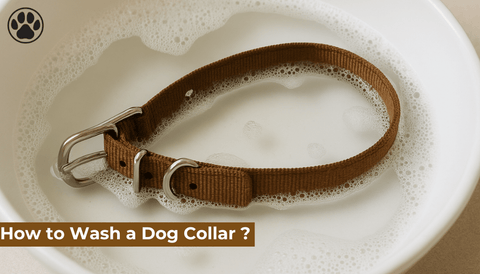
How Long Can a Dog Go Without Peeing?
of reading - words
As a dog owner, understanding your pet’s bathroom habits is an essential part of ensuring their overall health and well-being. One question that often arises is: how long can a dog go without peeing? While the answer varies depending on factors like age, size, health, and hydration levels, it is crucial to know the general guidelines and warning signs of potential health issues.
In this comprehensive guide, we’ll explore how long dogs can hold their bladder, factors that influence this time, and tips to ensure your dog’s urinary health.
General Guidelines for How Long Dogs Can Hold Their Bladder
The amount of time a dog can go without peeing depends on their age and physical condition:
1. Puppies Puppies have small bladders and underdeveloped control over their urinary systems. They typically need to urinate every 1-2 hours during the day. As they grow, this time gradually increases, and by the age of 4-6 months, they may hold their bladder for up to 4-6 hours.
2. Adult Dogs Healthy adult dogs can hold their bladder for approximately 6-8 hours. However, this can vary based on factors such as size, hydration, and activity level.
3. Senior Dogs Older dogs may need to urinate more frequently due to weaker bladder muscles or age-related health conditions. They may only be able to hold their bladder for 4-6 hours.
Factors Affecting a Dog’s Ability to Hold Their Bladder
Several factors influence how long a dog can go without peeing:
1. Hydration Levels The more water your dog drinks, the more frequently they will need to urinate. Adequate hydration is vital for maintaining healthy kidney function.
2. Diet Wet food contains more moisture than dry kibble, which can increase the frequency of urination. Additionally, certain foods may act as diuretics, causing your dog to urinate more often.
3. Size and Breed Smaller breeds generally have smaller bladders and may need to urinate more frequently than larger breeds. However, individual variation plays a significant role.
4. Activity Level Active dogs may drink more water to stay hydrated, leading to more frequent urination.
5. Health Conditions Certain medical issues, such as urinary tract infections (UTIs), diabetes, or kidney disease, can affect how often a dog needs to pee.
6. Medications Some medications, like diuretics, can increase the frequency of urination.
Signs Your Dog Needs to Pee
Recognizing when your dog needs to relieve themselves can help prevent accidents and discomfort. Common signs include:
-
Pacing or restlessness
-
Whining or barking
-
Sniffing around the floor
-
Scratching at the door
-
Circling or squatting
How Long Is Too Long for a Dog to Go Without Peeing?
While dogs can occasionally hold their bladder for longer periods, extended delays can lead to health risks. Holding urine for too long can cause discomfort and may lead to:
-
Bladder infections
-
Urinary tract infections (UTIs)
-
Bladder stones
-
Kidney damage
If your dog hasn’t urinated for 12-24 hours or shows signs of discomfort, such as straining or restlessness, consult your veterinarian immediately.
Tips to Promote Healthy Urination Habits
Ensuring your dog’s urinary health involves routine care and attention:
1. Maintain a Regular Bathroom Schedule Take your dog outside at consistent intervals, such as first thing in the morning, after meals, and before bedtime.
2. Provide Adequate Hydration Ensure your dog has access to fresh, clean water throughout the day. Hydration is essential for preventing urinary issues.
3. Offer Frequent Bathroom Breaks If you’re away for extended periods, consider hiring a dog walker or using a pet daycare to provide regular bathroom breaks.
4. Monitor for Changes Keep an eye on your dog’s urination patterns and behavior. Changes in frequency, color, or odor of urine may indicate a health issue.
5. Feed a Balanced Diet Provide a high-quality diet that meets your dog’s nutritional needs and supports urinary health. Avoid foods high in salt, which can contribute to dehydration.
6. Visit Your Veterinarian Regularly Regular check-ups can help identify and address any potential health concerns before they become serious.
Special Considerations for Puppies and Senior Dogs
Both puppies and senior dogs require extra care to maintain healthy urination habits:
Puppies:
-
Use positive reinforcement to encourage regular bathroom breaks.
-
Be patient as they learn bladder control.
Senior Dogs:
-
Provide easier access to outdoor areas.
-
Consider using pee pads or dog-friendly indoor solutions if mobility is an issue.
Frequently Asked Questions (FAQ)
1. How long can a puppy go without peeing at night? Puppies can typically hold their bladder for about one hour for every month of age during the night. For example, a 3-month-old puppy may hold it for 3-4 hours.
2. Is it harmful for a dog to hold their pee too long? Yes, holding urine for extended periods can lead to bladder infections, UTIs, and other health issues.
3. What should I do if my dog hasn’t peed all day? If your dog hasn’t urinated for 12-24 hours, consult your veterinarian immediately as this may indicate a serious health issue.
4. Can dogs hold their pee longer than humans? Dogs can hold their pee for several hours, but the exact duration varies depending on age, size, and health. In general, healthy adult dogs can hold their bladder longer than puppies or senior dogs.
5. How often should I take my dog out to pee? Adult dogs should be taken out at least 3-5 times a day. Puppies and senior dogs may require more frequent breaks.
Conclusion
Understanding your dog’s bathroom needs is essential for their overall health and comfort. While dogs can hold their bladder for varying amounts of time depending on age, size, and health, it’s important to provide regular bathroom breaks and monitor for any signs of urinary issues. By maintaining a consistent routine, ensuring proper hydration, and seeking veterinary care when needed, you can support your dog’s urinary health and well-being.




